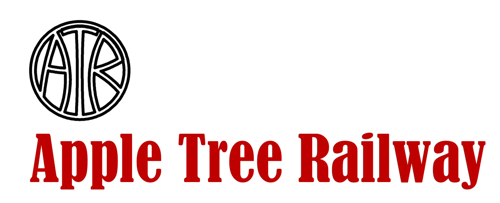Products
Enclosed Motor-Gearbox units
A range of high-quality, compact and convenient axle-hung motor-gearbox units, running in ballraces and with enclosed two-stage spur gears. These units offer easy fitting and dirt-excluding performance, and are mainly intended for outside-frame applications such as bogies having free space between the wheels. Each unit is run in to ease up any tight spots, and then it’s performance measured for speed and current draw. Comprehensive instructions are included along with a test certificate.
LP SLIM
The LP SLIM gearbox unit is universally suitable for most bogie applications in Gauge 3. Whilst a single unit will pull two lightweight cars of a multiple unit, several units can be used for higher powered applications or to improve traction. It is often difficult to get the power down without slip when just one axle of a Bo-Bo bogie is powered, and so use in pairs is often a good solution. When fitted to each powered axle of a mainline mixed-traffic diesel such as the Class 25, considerable tractive effort results and a scale speed of over 80mph. Requires 12-15v.
HP
The HP motor-gearbox is intended for mainline express diesels and electrics that use outside framed bogies, but can also be used in the tenders of steam outline, and other higher-powered applications. A supply voltage of up to 18V can be used, but experience has shown a very good performance when using a 12V sealed lead-acid battery. Scale speeds of over 100mph are possible. It uses all-metal gears of 14.2:1 ratio and a high quality 5-pole motor.
Type S2
Replacing the S1 and externally identical but with internal improvements. The S2 gearbox is a unit of moderate power, designed for the smaller spaces between the wheels and smaller power requirements of industrial narrow gauge (eg G45), or shunters and goods locos in Gauge 1 or Gauge 3. Trams or rail buses are another ideal application for either G3 or G1. If used in Gauge 3 then either inside or outside frames can be used, but for 45 mm track it will mainly be suitable for outside frames unless the special gearbox mounting bracket is used.
Bogie Kits
A range of easy assembly kits in G3 for BR prototypes, including powered bogies for diesel locos and DMUs, Mk1 coach bogies, and a USATC wagon bogie. All include wheels, laser cut steel frames and decorative dummy sideframe mouldings or prints. Most have ballraces and sprung suspension to keep the wheels in contact over track irregularities.
Coach Bogie BR1
The original BR1 bogie design of 8’ 6” wheelbase, brought in by British Railways to support the Mark 1 coaches. Many preserved examples of Mk1 coaches still utilise this bogie design. Later experiments by BR developed bogies to support the additional weight of buffet cars, and to provide better ride quality for passengers, and these may be offered later in kit form too. The kit contains all components to build a pair of bogies as shown above.
DMU Bogie
.The DMU bogie is representative of the 8’ 6” wheelbase bogies used by British Railways for the First Generation Diesel Multiple Units produced in the late 1950’s and early 60’s, such as Classes 108 and 121. The kit can be supplied as one of three options, unpowered as a trailer bogie; single motor-gearbox power unit; or twin motor-gearbox power units. The powered versions use the LP SLIM enclosed motor- gearbox power units, which are designed for 12V-15V supply. The kit contains all components to build one bogie as shown above. In addition, a moulded representation of the secondary springing may be available at a later date. These bogies will fit the Class 108 kits under development by Kippo Models. Slater’s 3’ disc wheels are supported by ballraces for low-friction running, and springing is included to absorb track undulations. Moulded dummy side-frames reproduce the fine detail. The main frames are laser cut and easy to fold into shape. Files, a vice, spring clamps and normal hand tools will be required for assembly. Fully illustrated build instructions are supplied.
USATC Wagon Bogie
This US Army Transport Corps wagon bogie (or ‘truck’ in US parlance), of the Bettendorf style, represents the myriad of uses in the first half of the C20th, culminating in large scale imports into Europe and the UK during and after the Second World War. In military use it was used for many types of flat bed or closed wagons, and for the tenders of S160 steam locomotives. The kit includes all items to build one bogie as pictured, and is a simple fold-up design in steel, supplied with full build instructions. The disc wheels scale at 3’ diameter.
45mm Accessories
These matched brackets enable the S1 or S2 gearbox to be mounted from the underside of a flat vehicle floor, without the need for any further support of the axle. This may suit lightweight 45mm gauge models, including trams. The axle ends can be removed to allow your own dummy outside frames to be used. The axle bracket and gearbox bracket are available separately, and each have four holes for attachment to the floor.
